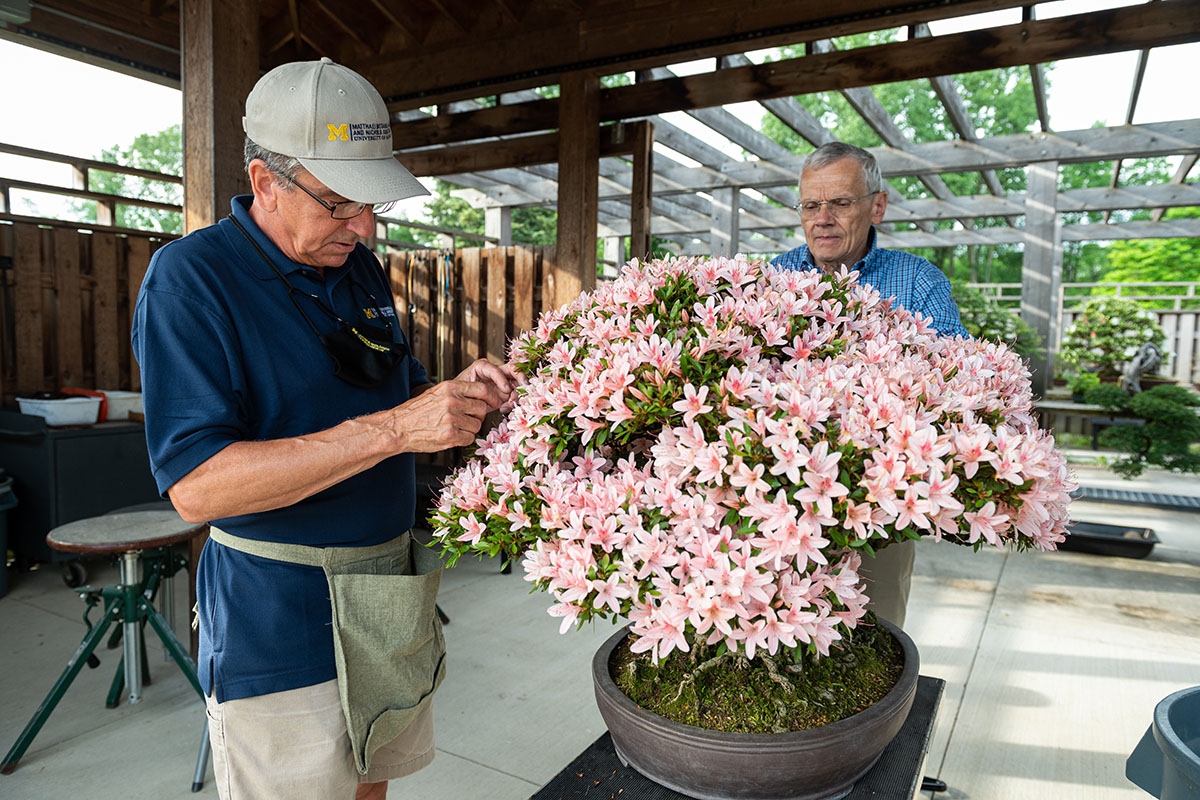Thriving in Ann Arbor
The UM bonsai collection began in 1977 with the gift of 163 bonsai trees from the estate of Dr. Maurice Seevers, one of the world’s leading pharmacology and toxicology researchers and UM Department of Pharmacology Chair (1942-1971). But Dr. Seevers was neither socially elite nor Japanese-American – he was born in Kansas in 1901. This begs the question of why Dr. Seevers developed a noteworthy bonsai collection in Ann Arbor.
The Second World War deeply impacted the University of Michigan in ways little-appreciated today. A crisis-level national concern was rising drug addiction and the destabilizing potential of synthetic narcotics developed in Nazi Germany. As part of addressing this world-wide epidemic specter, Dr. Seevers visited Japan eight times during the 1950s in a cooperative research program . Bonsai became his passion.
Others in Ann Arbor shared his passion: in 1970 the Ann Arbor Bonsai Society was founded, and in 1977 the Society helped the Gardens evaluate and reduce his collection to a manageable size. By 1983 the engagement became one of ongoing advice, and the Gardens began to accept additional trees even though there was no exhibit area. In 2000 the first small exhibit area was developed in the Conservatory. The Bonsai and Penjing Garden opened in 2012.
